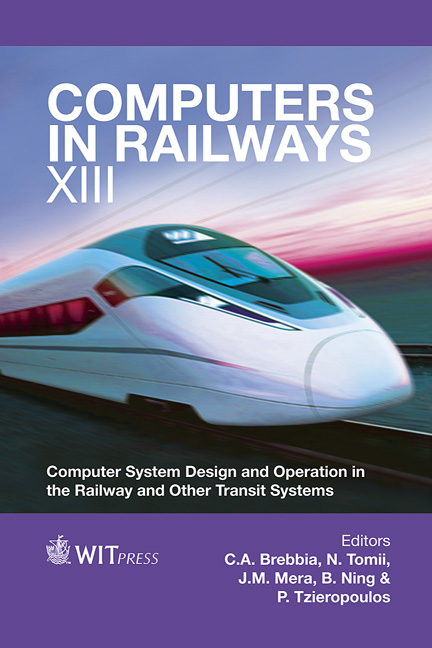Extending Capacity Utilisation Measures From Railway Network Links To Nodes
Price
Free (open access)
Transaction
Volume
127
Pages
12
Page Range
287 - 298
Published
2012
Size
2,947 kb
Paper DOI
10.2495/CR120241
Copyright
WIT Press
Author(s)
J. Armstrong & J. Preston
Abstract
Railway capacity is increasingly scarce and valuable, but is also inherently difficult to define and measure. To develop a full understanding of the capacity situation in a railway network or any of its constituent nodes and links, measures are needed of both (i) capacity provision, in terms of e.g. trains/passengers/TEU per hour, and (ii) capacity utilisation or consumption, in terms of the percentage of potential capacity that a given timetable utilises. This is because a given level of capacity provision can be timetabled in different ways, with varying levels of capacity utilisation, and, conversely, for a given level of capacity utilisation, significantly different levels of capacity can be provided, depending upon the train service pattern and mix. On busy networks, the typical objective is to provide as much capacity as possible for a given level of capacity utilisation, or, alternatively, to minimise the level of capacity utilisation for a given level of capacity, thus maximising capacity while making efficient use of the network and maintaining service reliability, which deteriorates as capacity utilisation increases. Recognised Capacity Utilisation measures are available for network links (e.g. the UIC 406 method, and the UK-specific CUI measure), but not for the junctions and stations forming the nodes which typically constrain network capacity. The benefits of extending the methodologies to nodes are widely recognised, particularly in the context of ever-increasing capacity demands. This paper describes the extension of existing capacity utilisation measures to enable their application to both junction and station nodes, and the development of algorithms and programs to enable their rapid calculation. Examples of simple and complex nodes are presented, and needs for further work are identified. Keywords: railway, capacity, capacity utilisation, nodes, junctions, stations.
Keywords
railway, capacity, capacity utilisation, nodes, junctions, stations





